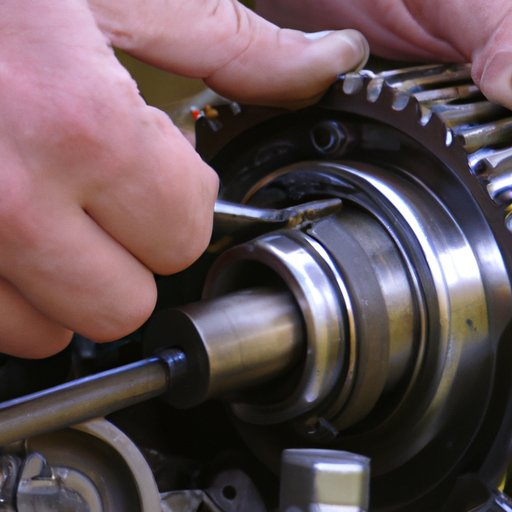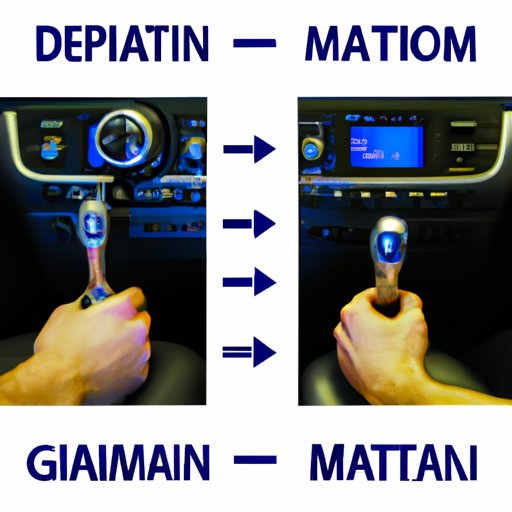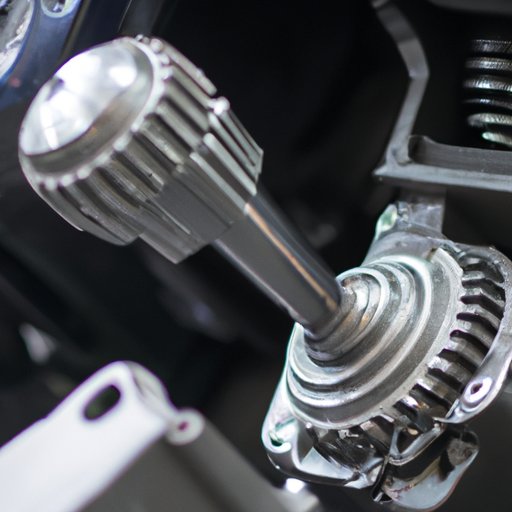Introduction
A transmission is an essential component of any vehicle, as it is responsible for transferring power from the engine to the wheels. It’s a complex system that consists of several components, each of which serves a specific purpose. In order to understand how a transmission works, it’s important to have a basic knowledge of the different parts and their functions.
Step-by-Step Guide to Understanding How a Transmission Works
The first part of a transmission is the gearbox, which is responsible for changing the speed and torque of the engine’s output. The gearbox is connected to the engine via the clutch and flywheel, which work together to transfer power from the engine to the gearbox. The clutch is a friction device that engages and disengages the engine from the gearbox, while the flywheel helps to keep the engine running smoothly.
The next part of the transmission is the torque converter, which is responsible for converting the engine’s rotational force (torque) into a usable form of power. This is done by using hydraulic pressure to create a fluid coupling between the engine and the gearbox. The torque converter also helps to reduce the amount of “slippage” between the engine and the gearbox, allowing for smoother shifting.
The last part of the transmission is the shifting mechanism, which is responsible for selecting the appropriate gear ratio for the vehicle’s current speed. This is done by engaging and disengaging the various gears within the gearbox. Most vehicles today use either an electronic or hydraulic shifting mechanism to make this selection.

Common Problems with Transmissions and How to Fix Them
Transmissions can suffer from a variety of problems, ranging from minor issues like slipping gears to major problems like leaks or complete failure. The best way to diagnose a problem is to take your vehicle to a qualified technician who can properly inspect the transmission and determine the cause of the issue.
Some of the most common problems include worn out bearings, leaking seals, and worn out clutches. Worn out bearings can cause the transmission to run rough and make grinding noises, while leaking seals can cause fluid to leak out of the transmission. Worn out clutches can cause the transmission to slip when shifting gears. Fortunately, these issues can often be fixed relatively easily with the right parts and tools.
The Benefits of Regular Transmission Maintenance
Regular maintenance is key to keeping your transmission running smoothly and avoiding costly repairs. This includes checking the oil and fluid levels, inspecting the belts and hoses for signs of wear, and replacing worn out parts. Additionally, it’s important to have your transmission serviced regularly to ensure that all of its components are in good working order. This will help to extend the life of your transmission and avoid costly repairs down the line.

Comparing Automatic and Manual Transmissions
When it comes to choosing the right type of transmission for your vehicle, there are two main types to choose from: automatic and manual. Automatic transmissions are easier to operate, as they shift gears automatically based on the speed of the vehicle. Manual transmissions require the driver to manually shift gears, but offer more control over the vehicle’s power and performance. According to a study conducted by the University of Michigan, “Automatic transmissions tend to provide better fuel economy and acceleration, while manual transmissions tend to provide better control over the vehicle’s power and performance.”
Conclusion
In conclusion, understanding how a transmission works is essential for anyone who drives a vehicle. By having a basic understanding of the different parts and their functions, as well as being aware of common problems and solutions, you can ensure that your transmission is running smoothly and efficiently. Additionally, regular maintenance is key to extending the life of your transmission and avoiding costly repairs. Lastly, when choosing the right type of transmission for your vehicle, it’s important to weigh the pros and cons of both automatic and manual transmissions.
(Note: Is this article not meeting your expectations? Do you have knowledge or insights to share? Unlock new opportunities and expand your reach by joining our authors team. Click Registration to join us and share your expertise with our readers.)
